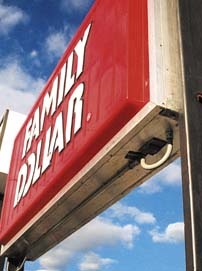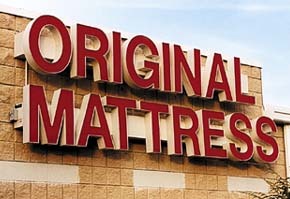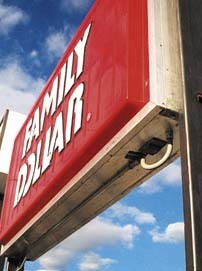Although the electric-sign business can be extremely rewarding, working with electrical components can have devastating consequences. If you’re considering entering the field — you run a commercial shop and want to expand your business, or you’re just scoping the territory — you probably have many questions and don’t know where to turn, just as many of us veterans did as we found our way in the business. So, in this series of articles, we’ll present the basics that will enable you to get started.
Legal approaches
Unlike other forms of signage, commercial electrical contracting requires licensing. State and provincial laws vary or may be nonexistent. The state of North Carolina (where I presently live) mandates, "No one shall engage in, or offer to engage in, the business of installing, maintaining, altering or repairing any electrical work, wiring devices, appliance or equipment without an electrical license" (General Statutes of North Carolina 87-43). No, a license isn’t required for changing a light bulb, but the minute you touch a conductor (wire), you need an electrical license.
Wait — don’t give up yet. There are many avenues to take. I suggest making an appointment with your local electrical inspector or authority having jurisdiction (AHJ). Ask the AHJ about proper procedures. Most folks feel uncomfortable around inspectors, but, eventually, you’ll meet this individual, one way or the other. The AHJ can be your greatest information source and your best ally as you grow your business.
Without this instruction, you could kill your business — or an employee. If your state or province doesn’t require an electrical license for electric signage, still follow the procedures covered below for your and your client’s security and safety. Initially, 99% of your concerns will revolve around designing the sign, ordering it from a wholesaler and installing it on site.
At this point, you subcontract an electrical company to secure the electric permit and a licensed electrician to complete the hook-up. Here, the AHJ is your game-plan asset because he ensures that the electrical portion of your sign conforms to code.
Advertisement
Cabinets or individual letters?
After you’ve contacted your local AHJ, what should you offer your client? The choices are many — a cabinet sign, an individual-letter display or a window display. We’ll begin with an overview of cabinet and individual-letter displays. In upcoming months, we’ll delve more deeply regarding their design and creation.
Cabinet displays can be designed with various shapes and mounting methods. These displays can be installed on a wall; between, or on, a pylon; or off the side of a building. They can illuminate in one, two or more directions. Generally, cabinet displays, which can be constructed for interior and exterior uses, are illuminated by high-output fluorescent lamps.
They’re normally far less expensive than individual-letter displays, which are lit by custom lamps crafted from neon (luminous tubing) or light-emitting diodes (LEDs). The average cabinet sign is powered by a single 120V circuit comprising three conductors — black (hot), white (neutral) and green (ground). A cabinet sign normally comprises a frame, retainers that hold the face material in place, hat sections that hold sockets in place and protect the conductors, the ballast and lamps. Face materials and treatments offer many options.
However, for simplicity, let’s assume the face material is flat-painted acrylic (plastic). Individual, illuminated-letter/ design displays are extremely popular, especially in regards to electric-sign zoning restrictions and mall criteria.
These displays can be constructed two ways. Individual, channeled, remote displays require significant field wiring and specialized know-ledge. Individually illuminated shapes (letters or designs) on a raceway generally feature channels 4 in. deep or greater. The internal lighting source comprises custom-made neon/luminous tubing or, more recently, red LEDs. (Technical Note: At this time, we caution consideration of white LEDs until the technology can match the marketing hype.)
Advertisement
However, for a novice, or any-one who lacks formal electrical training, we strongly recommend the raceway-mounted method. Some middle-of-the-road methods exist, but a raceway reduces field work to that of a cabinet sign.
The raceway not only houses the power supplies, but also secures letters and designs; thus, it gives us just one object to mount to a wall. Signmakers craft the face material of most channel signs from colored acrylic. The illumination power supplies, in most cases, are remotely located at the rear of the letters/ designs in a long metal raceway.
As with box signs, individual, illuminated-letter/design signs on a raceway are crafted and listed so that there is usually only one circuit — a hot, neutral and ground conductor. In most cases, this type of display uses 120V.
In summary
You must get licensed for electric-sign work. Obtain help and a game plan from your local AHJ. If you don’t possess an electrical license, subcontract the electrical permit process and conductor hookup to an electrically licensed individual. Request a copy of the permit and a final inspection ticket for your job file.
Because they’re relatively easy to install, illuminated cabinet signs provide a low price for a client’s consideration. Because of many zoning and mall requirements, individual, illuminated, channel signs/designs are the preferred choice. Incorporating the raceway method provides the piece of mind and security of a properly wired specialty product. To acquire knowledge of electrical basics, two publications are essential for your reference.
Advertisement
The National Electrical Code® (or the Canadian Electrical Code®) can be ordered from your local bookseller or by calling the International Assn. of Electrical Inspectors, (972) 235-1455. Versions dealing with your state/province can be found in (ST August 2002, p. 69-70).
Neon Techniques and Handling, by Wayne Strattman (this is an updated version of the Samuel Miller book), provides a solid foundation for understanding various aspects of neon. It can be ordered by calling ST Books, (513) 263-9399..


 Photo Gallery1 week ago
Photo Gallery1 week ago
 Ask Signs of the Times2 weeks ago
Ask Signs of the Times2 weeks ago
 Paula Fargo6 days ago
Paula Fargo6 days ago
 Real Deal3 days ago
Real Deal3 days ago
 Benchmarks2 weeks ago
Benchmarks2 weeks ago
 Photo Gallery6 days ago
Photo Gallery6 days ago
 Women in Signs2 weeks ago
Women in Signs2 weeks ago
 Women in Signs1 week ago
Women in Signs1 week ago

















